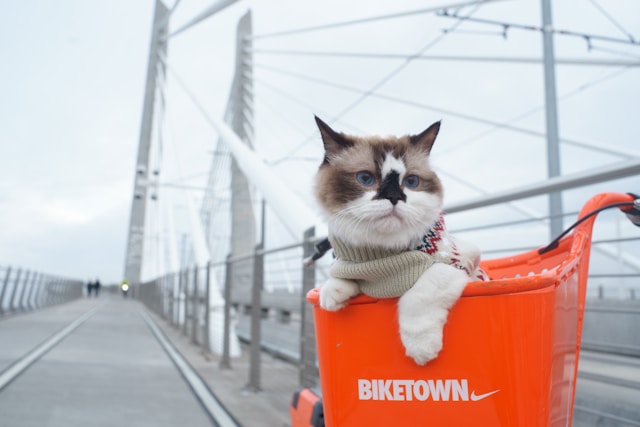Canine Fitness Challenges: Keep Your Cat Active and Healthy

Maintaining your cat’s physical and mental well-being is essential for their overall health. While cats are known for their independent and sometimes aloof nature, they still need regular exercise to stay fit and avoid obesity. Unlike dogs, who often enjoy structured physical activities like walks and agility courses, cats require a more creative approach to fitness. This guide will explore engaging and fun fitness challenges designed to keep your feline friend active, healthy, and mentally stimulated.
1. Understanding Your Cat’s Fitness Needs
1.1. Importance of Exercise for Cats
Exercise is crucial for cats for several reasons:
- Weight Management: Regular activity helps prevent obesity and associated health issues like diabetes and joint problems.
- Mental Stimulation: Physical activity provides mental challenges that reduce boredom and prevent behavioral problems.
- Muscle Tone and Flexibility: Exercise helps maintain muscle tone and flexibility, keeping your cat agile and active.
1.2. Identifying Your Cat’s Activity Level
Cats have varying activity levels based on their age, breed, and personality:
- Kittens and Young Cats: Generally more active and playful, they may enjoy more vigorous activities and play.
- Adult Cats: Require regular exercise to maintain their health, but their activity levels may vary.
- Senior Cats: May need gentler exercises to accommodate their decreased mobility and energy levels.
2. Creating an Engaging Fitness Routine
2.1. Interactive Playtime
Interactive play is one of the most effective ways to engage your cat in physical activity.
- Feather Wands and Laser Pointers: These toys mimic prey and encourage your cat to chase and pounce. Move the toy around to simulate hunting and keep your cat entertained.
- Catnip Toys: Many cats are motivated by catnip, which can make playtime more exciting. Use catnip-stuffed toys to encourage your cat to play and exercise.
- Automated Toys: Battery-operated toys that move on their own can keep your cat active when you’re not around to play.
2.2. Puzzle Feeders and Treat Dispensers
Puzzle feeders are a great way to combine mental stimulation with physical exercise.
- Food Puzzles: These feeders require your cat to solve puzzles to access their food, promoting mental and physical activity.
- Treat Dispensers: Use treat-dispensing toys to encourage your cat to work for their rewards. This can help increase their activity levels while providing a mental challenge.
2.3. Climbing Structures and Cat Trees
Climbing structures and cat trees provide vertical space for your cat to explore and exercise.
- Multi-Level Cat Trees: Invest in cat trees with multiple levels, platforms, and scratching posts. These encourage climbing, jumping, and stretching.
- Wall-Mounted Shelves: Install shelves or catwalks along your walls to create additional climbing opportunities. This adds vertical space without taking up floor area.
3. Fitness Challenges and Activities
3.1. Agility Courses
Agility courses can provide a structured and fun way for your cat to exercise.
- DIY Agility Course: Create a simple agility course using household items like cardboard boxes, tunnels, and obstacles. Encourage your cat to navigate through the course using treats or toys.
- Commercial Agility Kits: Purchase pre-made agility kits designed specifically for cats. These often include tunnels, jumps, and weave poles tailored for feline fitness.
3.2. Treasure Hunts
Treasure hunts are a fun way to combine physical activity with problem-solving.
- Hide and Seek: Hide treats or toys around your home and encourage your cat to find them. This activity stimulates their natural hunting instincts and promotes exercise.
- Interactive Toys: Use toys that dispense treats when your cat interacts with them. This can turn playtime into a rewarding activity.
3.3. Play Dates with Other Cats
Socializing with other cats can provide additional stimulation and exercise.
- Supervised Play Dates: Arrange play dates with other friendly cats in a controlled environment. This allows your cat to engage in playful behavior and socialize.
- Cat Play Groups: If possible, join a local cat play group or socialization class where your cat can interact with other cats in a safe setting.
4. Enrichment Activities for Indoor Cats
4.1. Window Perches and Outdoor Views
Providing your cat with access to outdoor views can stimulate their natural curiosity.
- Window Perches: Install a window perch or hammock to give your cat a comfortable spot to observe the outside world. This can provide mental stimulation and keep them entertained.
- Bird Feeders: Place a bird feeder outside the window to attract birds and provide your cat with visual stimulation.
4.2. Interactive Apps and Videos
Technology can offer additional sources of entertainment and stimulation for your cat.
- Cat-Friendly Apps: There are apps designed specifically for cats that feature moving objects on a screen. These can provide visual stimulation and encourage your cat to paw at the screen.
- YouTube Videos: Play videos designed for cats, featuring birds, fish, or other moving animals. These can engage your cat’s attention and provide a change of pace.
5. Creating a Safe and Stimulating Environment
5.1. Safety Precautions
Ensure that your cat’s play and exercise areas are safe and secure.
- Supervised Play: Always supervise playtime, especially when introducing new toys or activities, to prevent accidents or injuries.
- Safe Toys: Choose toys that are safe and non-toxic. Avoid items with small parts that could be swallowed or choked on.
5.2. Environmental Enrichment
Enhance your cat’s environment with various enrichment options.
- Varied Textures and Surfaces: Provide different textures and surfaces for climbing and scratching. This adds variety and keeps your cat engaged.
- Hiding Spots: Create hiding spots and cozy nooks where your cat can retreat and relax. This helps balance activity with rest and provides a sense of security.
6. Incorporating Exercise into Daily Routine
6.1. Scheduled Playtime
Incorporate regular play sessions into your cat’s daily routine.
- Consistency: Establish a consistent play schedule to ensure your cat receives regular exercise. Short, frequent play sessions are often more effective than longer, less frequent ones.
- Variety: Rotate toys and activities to keep playtime interesting and prevent boredom.
6.2. Engaging in Interactive Activities
Engage with your cat during playtime to strengthen your bond and enhance their experience.
- Play Together: Use interactive toys and games that involve you actively participating in play. This helps build a stronger bond and makes playtime more enjoyable for your cat.
- Training Exercises: Teach your cat simple tricks or commands to incorporate training into playtime. This can provide mental stimulation and reinforce positive behavior.
7. Monitoring Your Cat’s Health and Fitness
7.1. Observing Physical Changes
Keep an eye on your cat’s physical condition and adjust their exercise routine as needed.
- Weight Management: Monitor your cat’s weight and body condition. If you notice any changes, consult with your veterinarian to adjust their diet or exercise routine.
- Activity Levels: Pay attention to changes in your cat’s activity levels. If they become less active or show signs of discomfort, seek veterinary advice.
7.2. Regular Veterinary Check-ups
Regular veterinary check-ups are essential for maintaining your cat’s overall health and fitness.
- Health Assessments: Schedule regular vet visits to assess your cat’s health and address any concerns related to exercise or weight management.
- Preventive Care: Ensure your cat receives necessary vaccinations and preventive care to maintain their well-being.
Conclusion
Designing fitness challenges and activities for your cat is a rewarding way to promote their health and well-being. By incorporating interactive play, puzzle feeders, climbing structures, and creative activities, you can provide your feline friend with a stimulating and enjoyable environment. Balancing exercise with mental stimulation and ensuring a safe, enriching environment will help keep your cat active, healthy, and happy. Embrace the opportunity to engage with your cat through fun and innovative fitness challenges, and enjoy the benefits of a more active and contented companion.




